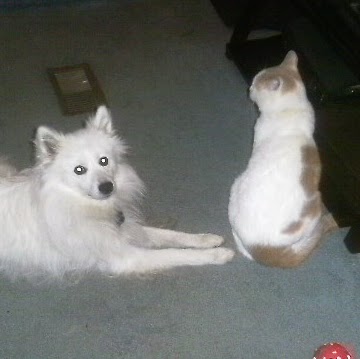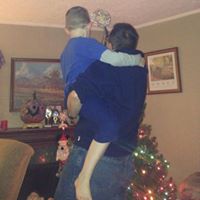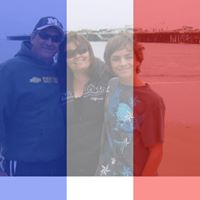Jeffrey M Conner
age ~66
from Salyersville, KY
- Also known as:
-
- Jeffery M Conner
- Jeff M Conner
- Jefferey M Conner
- Carol L Conner
- Jeff M Connor
Jeffrey Conner Phones & Addresses
- Salyersville, KY
- Morning View, KY
- Centertown, KY
- Walton, KY
Resumes

Jeffrey Conner
view source
Jeffrey Conner
view source
Jeffrey Conner
view source
Jeffrey Conner
view source
Jeffrey Conner
view sourceName / Title
Company / Classification
Phones & Addresses
CONNER ARCHITECTURE LLC
J.D. CONNER ENTERPRISES, INC
Us Patents
-
Coated Article With Internal Stabilizing Portion And Method For Making
view source -
US Patent:6372321, Apr 16, 2002
-
Filed:Mar 17, 2000
-
Appl. No.:09/527661
-
Inventors:Joseph D. Rigney - Milford OH
Elissa H. Lee - Cincinnati OH
Jeffrey A. Conner - Hamilton OH
Michael J. Weimer - Loveland OH -
Assignee:General Electric Company - Schenectady NY
-
International Classification:B32B 512
-
US Classification:428105, 428 358, 428 359, 428131, 428142, 428209, 428210, 427243, 427404, 427405
-
Abstract:A coated article is provided with a coating stabilizing portion in a coating combination on a substrate of the article. The coating combination includes a coating diffusion portion on the substrate and an outer coating portion outwardly from the coating diffusion portion. The coating stabilizing portion is provided between the coating diffusion portion and the outer coating portion to inhibit diffusion of undesirable elements to an interface with the outer coating portion and to enhance mechanical properties.
-
Enhancement Of An Unused Protective Coating
view source -
US Patent:6444060, Sep 3, 2002
-
Filed:Dec 22, 1999
-
Appl. No.:09/469469
-
Inventors:Joseph D. Rigney - Milford OH
Jeffrey A. Conner - Hamilton OH -
Assignee:General Electric Company - Schenectady NY
-
International Classification:B32B 1501
-
US Classification:148535, 148518, 148531
-
Abstract:A method is provided for enhancing to a selected coating range a substantially unused protective coating, including aluminum, on an article surface, for example an airfoil surface of a gas turbine engine turbine blade. The protective coating is enhanced without removing such unused coating. The unused coating is evaluated to identify at least one coating region that deviates from the selected coating range by being deficient in at least one of chemistry and physical condition, for example thickness. At least the coating region is enhanced to the selected coating range by applying over the identified coating region at least one secondary element selected from Pt, Rh, Pd, Cr, Si, Hf, Zr, and Y. At least the coating region is heated to diffuse the secondary element into the protective coating to provide a treated coating region. Then at least the treated coating region is aluminided.
-
Method For Refurbishing A Coating Including A Thermally Grown Oxide
view source -
US Patent:6465040, Oct 15, 2002
-
Filed:Feb 6, 2001
-
Appl. No.:09/777636
-
Inventors:Bhupendra Kumar Gupta - Cincinnati OH
Nripendra Nath Das - West Chester OH
Lyle Timothy Rasch - Fairfield OH
Jeffrey Allen Conner - Hamilton OH
Michael James Weimer - Loveland OH -
Assignee:General Electric Company - Schenectady NY
-
International Classification:B05D 312
-
US Classification:427142, 427140, 427242, 427328, 427307, 427309
-
Abstract:A method is provided for refurbishing a service operated metallic coating on a substrate alloy, the coating including at least within a coating outer surface at least one oxide chemically grown from at least one coating element, for example Al, and chemically bonded with the coating outer surface as a result of thermal exposure during service operation. Growth of the oxide has depleted at least a portion of the coating element from the coating. The method comprises removing the oxide from the coating outer surface while substantially retaining the metallic coating, thereby exposing in the coating outer surface at least one surface void that had been occupied by the oxide. The retained metallic coating is mechanically worked, substantially without removal of the retained coating, to close the void, providing a treated metallic coating surface over which a refurbishing coating is applied. In one form, the mechanical working provides, concurrently, a compressive stress in the substrate alloy beneath the metallic coating.
-
Thermal Barrier Coating System With Improved Bond Coat
view source -
US Patent:6485845, Nov 26, 2002
-
Filed:Jan 24, 2000
-
Appl. No.:09/489719
-
Inventors:Roger D. Wustman - Loveland OH
Jeffrey A. Conner - Hamilton OH
Jonathan P. Clarke - West Chester OH
Timothy L. Norris - Hamilton OH
Thomas E. Mantkowski - Madeira OH -
Assignee:General Electric Company - Schenectady NY
-
International Classification:B32B 1504
-
US Classification:428633, 428650, 428652, 428469, 4284722, 428632, 428697, 428699, 428701, 428702, 416241 R, 416241 B
-
Abstract:A thermal barrier coating (TBC) system and method for forming the TBC system on a component designed for use in a hostile thermal environment, such as superalloy turbine, combustor and augmentor components of a gas turbine engine. The TBC system exhibits improved spallation resistance as a result of having a bond coat formed to contain a dispersion of oxide particles in its outer surface region. A method for preferentially entrapping oxide particles in a bond coat entails depositing the oxide particles on the surface of the component prior to forming the bond coat, which may be a diffusion aluminide or an aluminized overlay coating. Deposition of the bond coat causes the oxide particles to become dispersed in the outer surface region of the bond coat. A particular feature of this invention is the ability to preferentially entrap oxides of elements that are not present in the bond coat or a substrate region of the component on which the bond coat is formed.
-
Method For Repairing A Thermal Barrier Coating
view source -
US Patent:6544346, Apr 8, 2003
-
Filed:Jul 1, 1997
-
Appl. No.:08/886504
-
Inventors:Roger D. Wustman - Loveland OH
John M. Powers - Independence KY
Jeffrey A. Conner - Hamilton OH
Jon C. Schaeffer - Milford OH -
Assignee:General Electric Company - Schenectady NY
-
International Classification:B08B 704
-
US Classification:134 29, 134 2217, 134 2218, 134 34
-
Abstract:A method of repairing a thermal barrier coating on a component designed for use in a hostile thermal environment, such as turbine, combustor and augmentor components of a gas turbine engine. The method is particularly suited for completely removing a thermal insulating ceramic layer of thermal barrier coating system that includes a metallic bond coat, such as a diffusion aluminide or MCrAlY coating, between the surface of the component and the ceramic layer, while leaving the bond coat substantially undamaged. Furthermore, the method of this invention includes a technique by which ceramic material within cooling holes in the component can be removed without damaging the underlying bond coat. The process steps generally include removing the ceramic layer from the surface of the component by subjecting the ceramic layer to a caustic solution at an elevated temperature and pressure, and then removing ceramic material from the cooling hole by carefully directing a high-velocity fluid stream into the cooling hole. According to this invention, the high-velocity fluid stream is able to overcome the compressive stresses that otherwise anchor the ceramic in the cooling hole, yet does not remove or damage the bond coat underlying the ceramic.
-
Gas Turbine Engine Component Having A Refurbished Coating Including A Thermally Grown Oxide
view source -
US Patent:6800376, Oct 5, 2004
-
Filed:Sep 30, 2002
-
Appl. No.:10/262113
-
Inventors:Bhupendra Kumar Gupta - Cincinnati OH
Nripendra Nath Das - West Chester OH
Lyle Timothy Rasch - Fairfield OH
Jeffrey Allen Conner - Hamilton OH
Michael James Weimer - Loveland OH -
Assignee:General Electric Company - Schenectady NY
-
International Classification:B32B 1500
-
US Classification:428612, 428632, 428650, 428679, 428680, 428681, 416241 R
-
Abstract:A method is provided for refurbishing a service operated metallic coating on a substrate alloy, the coating including at least within a coating outer surface at least one oxide chemically grown from at least one coating element, for example Al, and chemically bonded with the coating outer surface as a result of thermal exposure during service operation. Growth of the oxide has depleted at least a portion of the coating element from the coating. The method comprises removing the oxide from the coating outer surface while substantially retaining the metallic coating, thereby exposing in the coating outer surface at least one surface void that had been occupied by the oxide. The retained metallic coating is mechanically worked, substantially without removal of the retained coating, to close the void, providing a treated metallic coating surface over which a refurbishing coating is applied. In one form, the mechanical working provides, concurrently, a compressive stress in the substrate alloy beneath the metallic coating.
-
Preparation Of Components Having A Partial Platinum Coating Thereon
view source -
US Patent:62547569, Jul 3, 2001
-
Filed:Aug 11, 1999
-
Appl. No.:9/373269
-
Inventors:Antonio F. Maricocchi - Loveland OH
Roger D. Wustman - Loveland OH
Jonathan P. Clarke - West Chester OH
Thomas E. Mantkowski - Madeira OH
David G. W. Fargher - Fairfield OH
Jeffrey A. Conner - Hamilton OH -
Assignee:General Electric Company - Cincinnati OH
-
International Classification:C25D 502
C25D 550 -
US Classification:205 97
-
Abstract:A curved component such as a turbine airfoil, shroud, or combustor centerbody is prepared with a platinum or a platinum-aluminide protective coating over only a portion of the surface thereof. The coating may serve as an environmental coating, or as a bond coat of a thermal barrier coating system. The partial coverage is achieved by depositing platinum only over a portion of the surface of the component, typically including the concave portion in the case of an airfoil, optionally depositing an aluminum layer, and optionally interdiffusing the platinum and aluminum layers.
-
Renewing A Thermal Barrier Coating System
view source -
US Patent:60428805, Mar 28, 2000
-
Filed:Dec 22, 1998
-
Appl. No.:9/219163
-
Inventors:Joseph D. Rigney - Milford OH
Jeffrey A. Conner - Hamilton OH
David J. Wortman - Hamilton OH
Bangalore A. Nagaraj - West Chester OH -
Assignee:General Electric Company - Cincinnati OH
-
International Classification:B32B 3500
-
US Classification:427142
-
Abstract:A thermal barrier coating (TBC) system, comprising a metallic bond coat on an article surface and an outer ceramic TBC is repaired by renewing without removing the bond coat. The outer ceramic TBC is removed to expose a bond coat substrate. At least one discrete local surface area of the article surface subject to bond coat degradation is selected from a thermal pattern unique to the article surface from service operation. At least one renewal metal selected from Pt, Rh, and Pd is applied at least to the selected discrete local surface area and heated to diffuse the renewal metal into the bond coat substrate. An environmental resistant coating selected from aluminides and alloys including aluminum is applied at least to the discrete local surface area over the renewal metal. Thereafter, an outer ceramic TBC is applied to the article surface.
Lawyers & Attorneys

Jeffrey Conner - Lawyer
view sourceSpecialties:
Litigation
Appeals
Government
Constitutional
Appeals
Government
Constitutional
ISLN:
921957773
Admitted:
2009
Law School:
Gonzaga University, J.D.

Jeffrey Conner - Lawyer
view sourceOffice:
Dole Packaged Foods, LLC
Specialties:
Mergers and Acquisitions
Corporations
Securities
Corporate Finance
Corporations
Securities
Corporate Finance
ISLN:
908240140
Admitted:
1989
University:
Harvard University, Ph.D., 1980; University of California at Los Angeles, B.A., 1978
Law School:
Harvard University Law School, J.D., 1989
Googleplus

Jeffrey Conner (Furiousje...
Work:
Pipstemstate Park, Outback Steak Houe, SRJ - USPS HCR
Education:
Mountain State University - Outdoor recreation management
About:
I was born, and raised in southern WV. I love the outdoors. Such activities that I do outside are fourwheeling, hikeing, hunting, and fishing. I am a firefighter I love my mountaineer football, and b...
Bragging Rights:
I am a college graduate of Mountain State University with a degree in Outdoor Recreation Management. I am a firemen at the Green Sulphur District Vol. Fire Department. I am Married. I am certified in different types of rescue situations.

Jeffrey Conner

Jeffrey Conner

Jeffrey Conner

Jeffrey Conner

Jeffrey Conner

Jeffrey Conner

Jeffrey Conner
Plaxo

Jeffrey Conner
view sourcePartner at Conner & Associates
Youtube
Classmates

Jeffrey Conner
view sourceSchools:
Golden Valley High School Golden Valley MN 1973-1977
Community:
Nystrom Fudge, Bruce Heideman, Pam Ansel

Jeffrey Conner
view sourceSchools:
East St. Louis High School East St. Louis IL 1988-1992
Community:
Theresa Marshall, Angela Sanders, Ruby Gill, Cherrie Walker

Jeffrey Conner
view sourceSchools:
Woodrow Wilson Junior High School Roanoke VA 1974-1977
Community:
Beverly Maurer

Jeffrey Conner
view sourceSchools:
Jerry Whitehead Elementary School Sparks NV 1986-1993
Community:
Pamela Johnson, Robin Kesterson, Karen Stratton, David Moser

Jeffrey Conner
view sourceSchools:
Leominster High Trade School Leominster MA 1979-1983
Community:
Jerry Nadasky, Casey Merrill, Anibal Ayala, Michelle Rajotte

Jeffrey Conner
view sourceSchools:
Woodrow Wilson Junior High School Edison NJ 1980-1982
Community:
Colleen Selert, John Heller, Mary Lynch

Jeffrey Conner
view sourceSchools:
North Londonderry Elementary School Londonderry NH 1992-1997
Community:
Laura Foote

Jeffrey Conner
view sourceSchools:
Fairview High School Fairview Park OH 1974-1978
Community:
Lewis Kelly

Jeffrey Conner
view source
Jeffrey Conner
view source
Jeffrey Conner
view source
Jeffrey Conner
view source
Jeffrey Wayne Conner
view source
Jeffrey Conner
view source
Jeffrey Allen Conner
view source
Jeffrey Todd Conner
view sourceFlickr
Myspace
Get Report for Jeffrey M Conner from Salyersville, KY, age ~66















